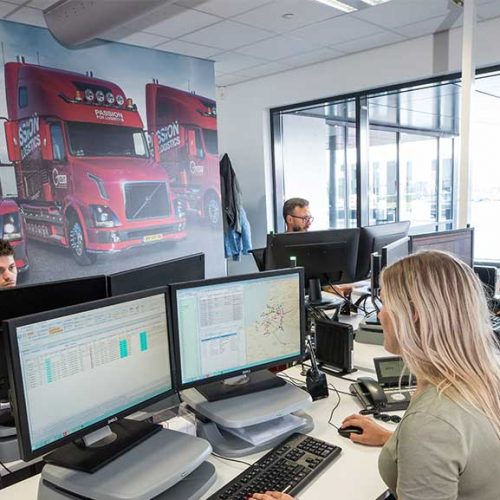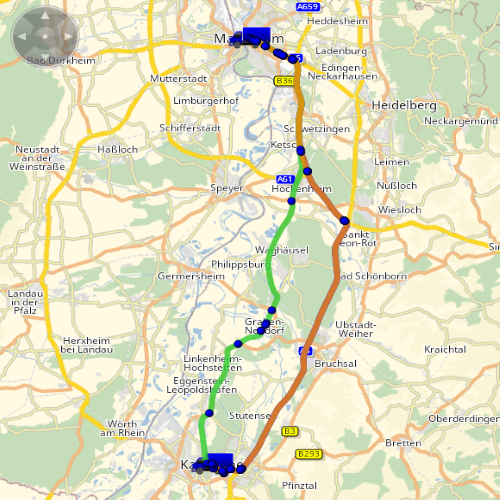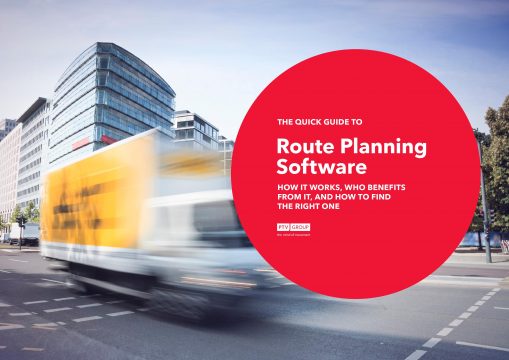The quality of transport planning largely determines the profitability of a transport company. This, in itself, is a reason to provide transport planners with the best tools. Nevertheless, we still see many transport companies that do route planning manually, fully relying on the knowledge and experience of their planners. Is this justified in 2022, when excellent route planning software is available?
In some offices, a map is still hanged on the wall, on which planners mark the rides between loading and unloading addresses. The quality of this route planning is mainly dependent on the knowledge and experience of the planners. They know the addresses and the bottlenecks along the way, if only because they had been behind the wheel for many years.
However, this method is not sufficient to calculate all trips accurately, to the kilometer or minute. Planners simply lack the means and the time to achieve it.
Automatic Scheduling 2.0
The first transport software products provided relief. Planners suddenly got a digital planning board, which allowed them to easily link transport orders to trucks and drivers. They could add up the load meters per trip and see if a truck still had room for an extra shipment.
With a route planning software, planners could calculate the distances and driving times per trip. This led to a reduction in planning times and to better planning in general. Call it automatic scheduling 2.0. Read in our blog post on why a digital planning board is not a route optimization software.
But when using a digital planning board in transport management or other administrative system, the quality of the planning still depends on the knowledge and experience of the planners. It is still the planner who must allocate the orders and trips.
Because a planner can’t keep puzzling endlessly, he or she needs to rely on a gut feeling and rules of thumb. At the same time, the planner must consider all requirements and wishes, such as work time agreements, vehicle specifications, driver certifications, window times, environmental zones, etc.
Reduce planning times and improve efficiency?
Benefit from automatic scheduling
Planners and software
Is it still possible today, to solely rely on the knowledge and experience of the planners? After all, the quality of route planning determines the load factor of the transport company. And the higher the load factor, the bigger the profit margin.
It requires route planning that is based on hard facts, instead of the often-deceptive gut feeling. This is especially true in the transport logistics sector, where margins have been smaller for some years now.
In addition, route planning is becoming increasingly complex. Customers are making more and more demands and wishes, which translate into an increasing number of restrictions that planners must consider.
As if that were not enough, governments are also increasing their demands. For example, time windows, environmental zones, or mandatory approach routes in inner cities. For a planner, it has become almost impossible to consider all the restrictions.
And if the planner fails, it risks the transport company. Its continuity is endangered if business operations depend on the knowledge and experience of one planner.

Automatic route planning

With a fully automatic route planning software, transport planning enters the next generation. Such a system enables planners to automate their work.
For example, they can project orders onto a digital map and then create their own trips. The system then checks that all restrictions are met, and that maximum loading capacity is not exceeded. This is semi-automatic route planning.
Planners can also opt for fully automatic route planning. At a push of a button, advanced algorithms distribute the orders over the trips and create a plan proposal.
Automatic route planning has many advantages. Planners finish earlier, make fewer mistakes, and don’t forget about restrictions. Because the algorithms calculate in seconds many more possibilities than planners do in hours, automatic planning leads to higher load factors and to bigger profit margins.
And finally, restrictions and other inputs are recorded as much as possible in the automatic route planner. So there is less dependence on knowledge and experience of specific planners. In other words, if a planner leaves the company, his/her knowledge and experience remain available.
What about the future of transport planners?
What does this mean for the role of the transport planners in the transport company? Transport planners are still needed, and are as important as before.
Blindly relying on a plan proposal produced by the algorithms is undesirable. Almost every day, exceptions come up to the rules and restrictions of route planning software. It is up to the human planners to test the plan proposal and consider these exceptions.
In addition, the planners know better than the algorithms where there is room for maneuver, to refine and improve the plan proposal. Because they spend less time on the actual planning, planners have more time for optimization. That can increase efficiency by a few percentage points every day. And every percent counts.

